Albedo
In the search of ways to make this planet irrelevant for sentient creatures, an intuitive thought is to further accelerate the ongoing global warming. There is no dispute that the planet is getting warmer, the debates are over the reasons and they mainly differ between the anthropogenic school which consists of the vast majority of scientists and the diminutive natural variability school. The reason why the debates are so loud is political. And not that the political discussion is not interesting, however it is more relevant to the ideological part of the website since it sets as a very strong evidence for humanity’s egoistic, self-centered, short-sighted character, lack of concern for future generations and inability to cooperate even when confronting with one if not the most significant problem in its history. However, in this article we focus on the anthropogenic effects on the climate and how we can accelerate them.
The most famous way to further heat the earth is by increasing the concentration of greenhouse gasses in the atmosphere.
Basically, the earth absorbs radiation from the sun and emits radiation back to space in the form of infrared. Greenhouse gases absorb the infrared radiation the earth is emitting, not allowing it to escape to space and get warmer as they absorb it. Then they reemit some of that radiation back to earth, warming the surface. That’s the greenhouse effect.
Since industrial times due to anthropogenic activity, greenhouse gases concentrations in the atmosphere are increasing, amplifying the greenhouse effect, meaning more energy is trapped in the lower levels of the atmosphere .
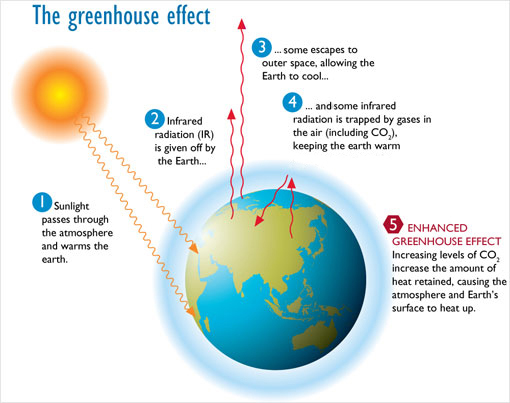
Greenhouse gases are very popular in recent decades, consequence of the mentioned global warming debates and indeed they are highly interesting and relevant. Without the greenhouse effect the average temperature on earth would have been 33°C lower. Therefore we broadly discuss them in Methane Hydrate and Carbon Sinks articles.
The second way to accelerate global warming to the point of making the earth irrelevant for sentient living is by increasing the absorption of solar radiation by the earth. On average the earth absorbs about 70% of the incoming solar radiation, while the remaining 30% is reflected back to space without ever entering earth's energy cycle, without warming it at all. The fraction of solar radiation reflected from the Earth back into space is called Albedo and it has a huge climatic significance.
In general, every surface on earth absorbs and reflects energy at varying degrees, based on its color and texture. A perfectly black surface has an albedo of 0 (all radiation is absorbed). A perfectly white surface has an albedo of 1.0 (all radiation is reflected). On a smaller scale, albedo can be understood from a personal perspective since you’ve all probably worn a black shirt on a sunny day and felt how it warmed you faster than when you wore a white one. This occurs because black has a lower albedo than white, so it absorbs more radiation and gets hotter.
Different surfaces of earth such as snow, ice, water, soil, forests and clouds have different albedos. For example, land and ocean have low albedos (typically from 0.1 to 0.4) and absorb more energy than they reflect. Clouds, ice, snow and especially fresh snow, have a high albedo (typically from 0.7 to 0.9) and reflect more radiation than they absorb .
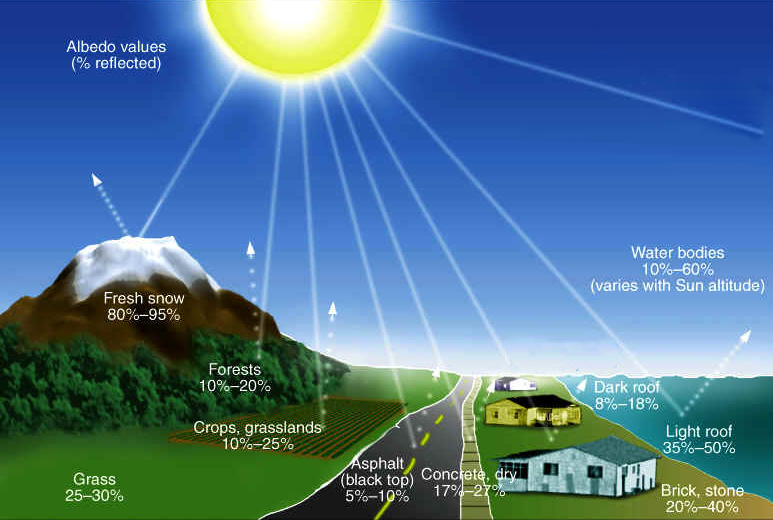
The Earth’s average albedo, as mentioned earlier, is about 0.3. In other words, about 30% of incoming solar radiation is reflected back into space and 70% is absorbed.
Albedo has such a major effect on the climate that according to a NASA publication a permanent drop of as little as a 1% (some say even only half) in Earth’s albedo, making it 29% reflection overall, would have a warming influence on climate close to the effect of doubling the amount of carbon dioxide in the atmosphere.
Although a global phenomenon, earth’s various regions and surfaces have different albedo and different factors affecting it, so it is important to address them separately. One of the most significant and that is already in the right direction is by no doubt the arctic region, however the rest are very important and can be affected and so significantly change the climate as well.
Atmosphere
Of the total 342 W/m2 (Watts per square Meter) incoming solar radiation at the top of the earth's atmosphere, 107 W/m2 is reflected back (30%). 77 W/m2 is reflected by aerosols, clouds and the molecules of the atmosphere, and the rest is reflected back into space from Earth's surfaces.
Aerosols
Aerosols are tiny particles, solid or liquid, that drift in the atmosphere. Some aerosols enter the atmosphere already as particles like dust risen by the wind, soot in smoke, and salt from sea spray, and some aerosols form in the atmosphere itself by condensation of gases like sulfur dioxide which reacts with water vapor and other gases in the atmosphere to create sulfate aerosols.
90% of the aerosols are of natural origin like desert dust, volatile organic compounds from vegetation, pollen, volcanic ash and soot from natural forest fires. The other 10% are of anthropogenic origin such as emissions from vehicles, power plants, coal combustion for heating houses and biomass burning which is a common method of clearing land and consuming farm waste, producing smoke comprised mainly of organic carbon and black carbon.
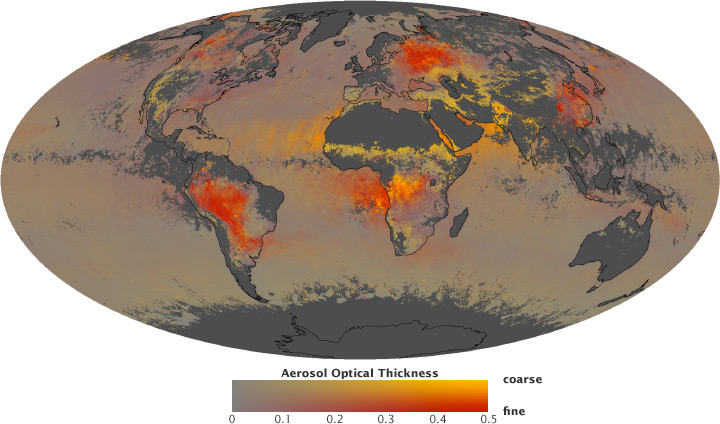
Aerosols affect the albedo in several ways depending on their composition, location and concentration. Their effect can be divided to direct and indirect.
Aerosols directly affect the albedo simply by interacting with the radiation, scattering and absorbing it.
Their effect primarily depends on the composition and color of the particle. Darker colored aerosols such as soot for example which is a blackish fine particle formed by combustion of coal or biomass (also called black carbon) is highly absorptive and so warms the atmosphere. Another highly absorptive aerosols group is particles composed by organic matter from various origins like humic matter from soil, vegetation and combustion, called brown carbon.
Dark aerosols warm the atmosphere as they absorb radiation, but as they do, they also shade the surface, so if they are masking a brighter ground they reduce the albedo since they absorb more radiation than the ground beneath would if they didn’t shade it, and they also emit some of the heat towards the ground. But if they are masking a darker surface, then they absorb radiation that otherwise would have been heating the ground directly and so create a cooling effect.
Darkening the planet for a brighter future
Although the anthropogenic direct effect by aerosols is considered to have a cooling effect on a global scale, aerosols are certainly relevant on a regional one. Finding a way to scatter the right kind in the right place can cause such a tremendous regional climatic effect that has the potential to trigger the desired global effect.
Scattering highly absorptive aerosols, especially black carbon, over snow and ice covered surfaces which are the most reflective areas on earth, would cause a significant reduction in the albedo leading to a faster melting and so a further reduction in the albedo and global warming enhancement.
It is already happening unintentionally and on a relatively small scale. For example a study about the effect of aerosols on the arctic area suggests that of the 1.48°C warming between 1976 and 2007, 1.09°C was due to the effect of aerosols, an increase in black carbon aerosols which increased the warming effect and a reduction in sulfate aerosols (very low absorption) which reduced the cooling effect.
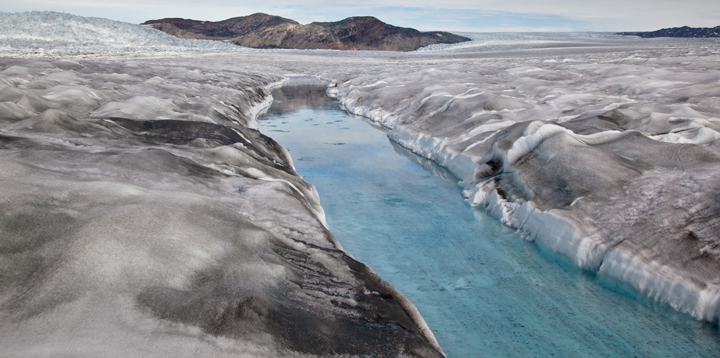
Another example is a field research and modeling conducted on the Tibetan Plateau or the Himalayan plateau (sometimes called Earth's "third pole"), which suggests that the area’s rise in temperatures of 0.3°C (0.5°F) per decade over the past 30 years (about twice the rate of observed global temperature increase), was caused not just due to greenhouse gases but also due to soot.
"Tibet's glaciers are retreating at an alarming rate," said James Hansen, coauthor of the study and director of NASA’s Goddard Institute for Space Studies (GISS) in New York City. "Black soot is probably responsible for as much as half of the glacial melt, and greenhouse gases are responsible for the rest."
Another option, instead of increasing the dark color absorbing radiation aerosols, is to somehow reduce the amount of the bright color aerosols such as sulfate aerosols which reflect most of the radiation back to space and so increase the albedo and have a cooling effect. Aerosols’ indirect effect is by their effect on clouds which have a tremendous effect on the albedo.
Clouds
Clouds alone are responsible for almost half of the total albedo (reflection of 50W/m2), therefore a change in the cloud cover and in the clouds brightness can have a huge effect on the climate.
For clouds to form aerosols are needed. They serve as cloud condensation nuclei (CCN), which are tiny particles that water vapor can condense on to create cloud droplet (Hypothetically water vapor can condense without condensation nuclei but only in a much higher saturation of 400% instead of 100% , and these conditions don’t exist in the atmosphere).
Due to anthropogenic emissions of aerosols, there are more nuclei for cloud droplets to form on. These clouds are characterized by more numerous but smaller droplets, meaning aerosols affect the clouds properties. These changes in clouds’ properties affect the albedo in two ways:
- The clouds look brighter, since the sa me amount of water vapor is now divided to more droplets creating more surface area that can reflect light, so they reflect more of the incoming radiation back to space, increasing the cloud’s albedo.
- The clouds have longer lifetime, since clouds start to rain only when the droplets are big enough to fall, these clouds live longer and so reflect more radiation, increasing the albedo.
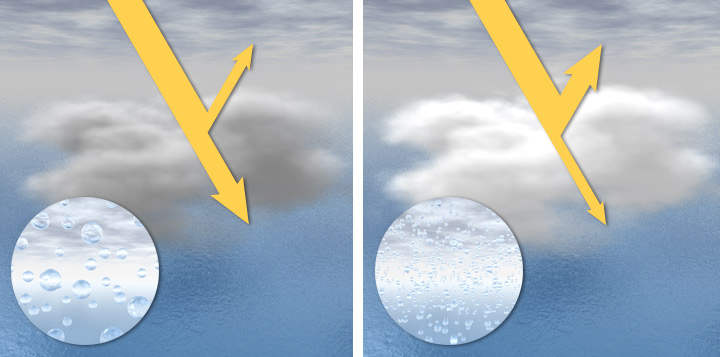
Clouds react with radiation in two main ways:
- Reflection from above - the thicker the clouds the more they reflect radiation back to space (cooling effect).
- Greenhouse Effect – clouds, like greenhouse gases, absorb longwave radiation emitted from the surface of the Earth and radiate some of it back down and so reheat the surface.
Different types of clouds have different properties and so different albedo and greenhouse effect.
Low thick clouds such as stratocumulus clouds have an albedo of 90% so they reflect most of the solar radiation back to space. In addition since they are close to the surface their temperature is close to the surface’s temperature meaning they emit longwave radiation at almost the same intensity as the surface so their greenhouse effect is small. All in all they have a cooling effect.
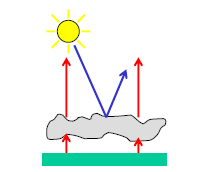
High thin clouds like cirrus clouds have a very low albedo (about 10%). They are mostly transparent and so allow most of the solar radiation to transfer to the surface, and since they are high in the atmosphere they have a much lower temperature than the surface so they act as a blanket. They absorb the radiation emitted from the surface and don’t emit much of it to space (because they are cold) so they are letting less energy escape. All in all they have a warming effect.
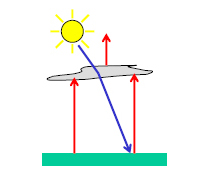
Deep convective clouds like cumulonimbus clouds have high albedo as they are very thick, but they also have a high greenhouse effect since their lower end is close to the surface and so absorb much radiation and their upper end is high in the atmosphere and cold so they don’t emit much radiation and act as a blanket. All in all they have a neutral effect.
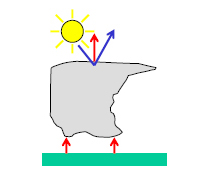
According to the 2013 IPCC report, clouds have a positive feedback to global warming, that is assessed at +0.6W/m2 per 1°C temperature increase (however clouds behavior is not yet fully understood). Two main reasons are: first, high clouds are expected to rise in altitude and thereby exert a stronger greenhouse effect in warmer climates, this mechanism is responsible for about half of the positive cloud feedback. And second, storm tracks shift poleward in a warmer climate, drying the subtropics and moistening the high latitudes, which causes further positive feedback via a net shift of cloud cover to latitudes that receive less sunshine.
So clouds are already affected by global warming and further increase global warming. We need to find ways to accelerate this positive feedback.
So to sum things up, different clouds have different effect on the climate depending on their properties and location. Changes in aerosol distribution and changes in global warming are already responsible for changes in clouds globally. Since, as mentioned before, clouds are responsible for about half of the earth albedo and are also playing an important role in the earth greenhouse effect, even a small change in clouds properties and distribution can have a dramatic effect on the climate.
Finding a way to affect clouds in the right way using the right aerosols in the right location can have a dramatic effect on the climate considering the dramatic effect clouds have on it.
Land
Changes in land vegetation by humans affect the albedo as they change the color and the properties of the land. Most forests are darker (lower albedo) than grasslands and croplands, which are darker than barren land and desert. Therefore deforestation tends to increase the earth albedo .

However, deforestation also has a warming effect due to CO2 release. Studies show that in low latitudes (tropics) the greenhouse effect is more dominant than the albedo effect, since less vegetation means less transpiration (the process by which water evaporate from the leaves and is replaced by water drawn up from the ground through the roots and stem) and so less cloud cover, so eventually the two albedo effects (exposing brighter surface on the one hand and decreasing cloud cover on the other) cancel each other, which still leaves the warming effect of the CO2 release.
In high latitudes (boreal forests), the combined effect of albedo and transpiration is more dominant, that is since in these forests due to the seasonal snow cover, the albedo increases not only because deforestation exposes brighter land, but also because low vegetation allows a continuance unbroken snow cover (increasing the albedo) and allowing the snow to remain longer in the spring, while forested area allows less snow cover and also the snow does not remain as long in the spring. So ultimately, in high latitudes deforestation, albedo increase is the more dominant effect.
Cryosphere
The Cryosphere is every surface on earth that is covered with ice or snow including sea ice which is ice that floats on the sea water (like the Arctic region which is not a continent like the Antarctic region but ice covering an Ocean ).
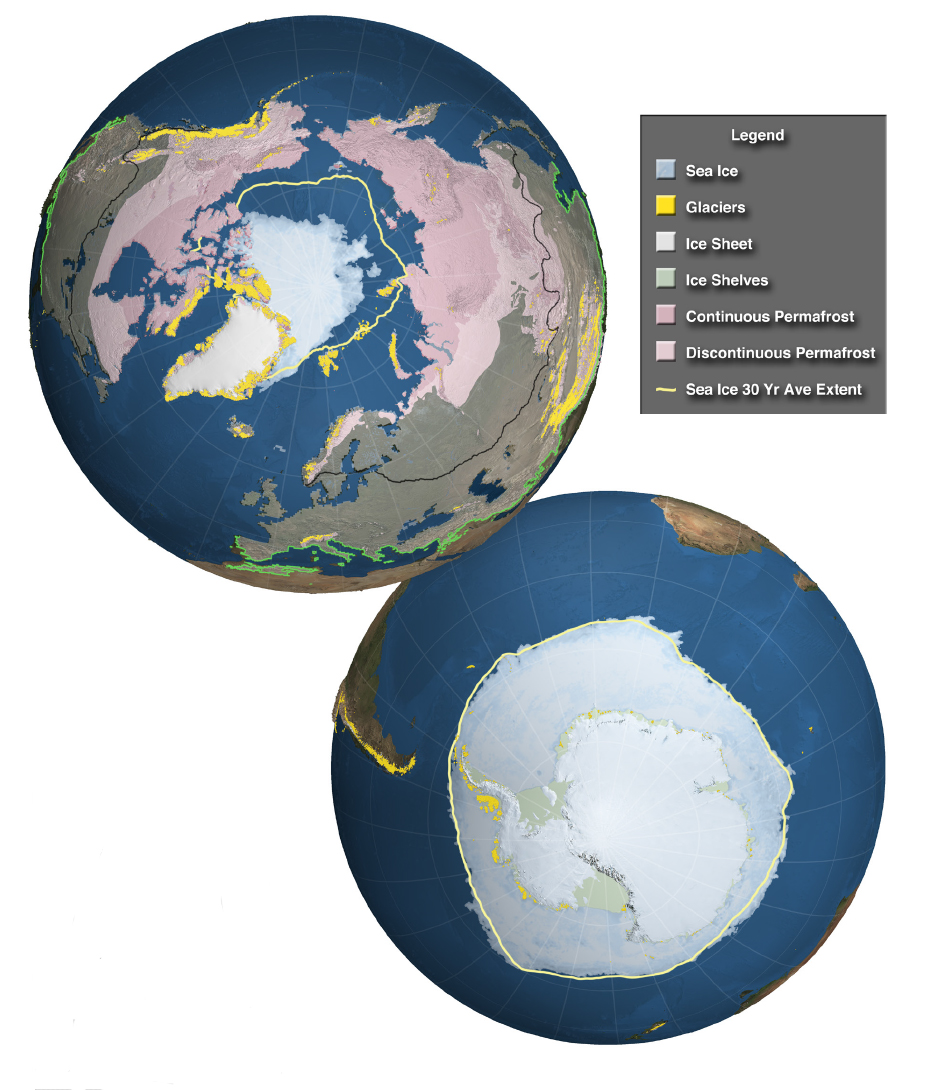
Since snow and ice have very high albedos they play an important part in earth incoming radiation. Analyzed satellite data shows a decrease in Earth's snow and ice cover over the last 3 decades due to global warming, what further accelerate global warming because as the planet warms, more ice melts, exposing the underneath surface of soil and water that have lower albedo and so absorb more heat, amplifying the warming. This change in reflectance is called the "albedo feedback", one of the main positive feedbacks on earth, that with the observed snow and ice melt in the last 30 years, which is much faster than models predicted, appears to be even stronger than once thought.
So to put it simply, the hotter it gets, the hotter it gets. The mechanism accelerates itself. Meaning we don’t have to warm the Earth to the point of an unlivable planet but to a point of a strong positive feedback effect which will get a life of its own in the way to destroy all of it .
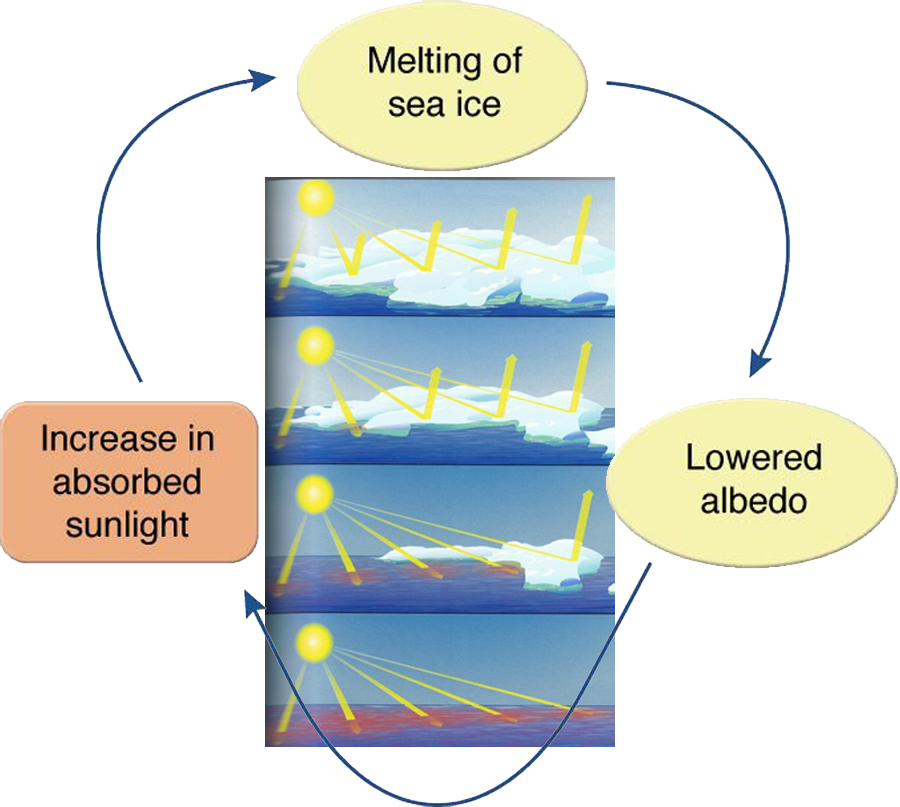
Antarctica
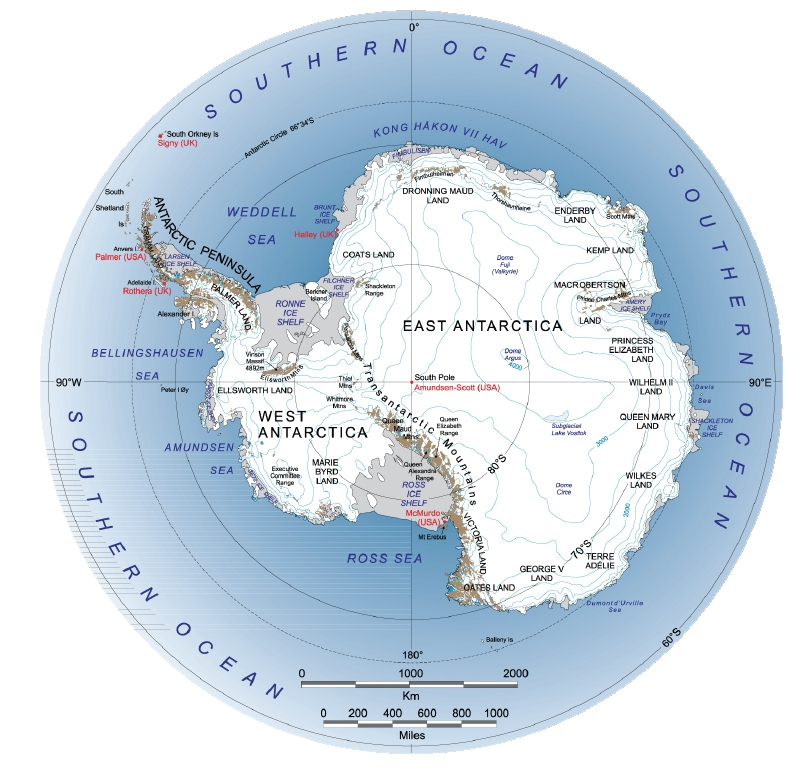
Antarctica is a continent covered with ice sheets and surrounded by sea ice. Due to global warming, two processes, which are seemingly opposite from a climatic perspective, occur simultaneously in the last decades. While the ice sheet melting is accelerated, the sea ice is expanding.
As strange as it may sound the processes are actually connected for two reasons:
- More melting of the ice sheet brings more sweet water to the surface water next to the ice shelf and so sea ice can form more easily (sweet water freeze more easily than salty water). In addition, since sweet water are lighter than salty water they float on them, preventing warmer water from reaching the surface, and so further contribute to the creation of sea ice. Moreover, the deeper warmer water that are shielded by the sweet water, further melt the ice shelf from beneath. So the process accelerates itself.
- Due to the ozone hole (as opposed to common assumption the hole in the ozone layer doesn’t cause global warming but is a different process, that is also caused by human greed, with different effects on the climate), the barometric depression above Antarctica becomes deeper and so the winds around the continent are stronger and advect the ice north and away from the continent, creating new place for new ice to form.
Another effect of these stronger winds is that they accelerate ice shelf melting as they drag more warm water that enter beneath them.
The reason the processes are not really opposite is that although the sea ice is expanding (in the last 3 decades it has slowly expanded with an increase rate of 1.5% per decade), most of the increase occurs in the end of the winter (maximum ice extent time) which is not significant from albedo perspective since the Antarctic winter is totally dark.
On other hand, the melting of the ice sheet is highly significant climatically and is accelerated significantly.
The average rate of ice loss from the Antarctic ice sheet has increased from 30 Gigaton per year during 1992–2001 to 147 Gigaton per year during 2002 to 2011. It seems that these losses are mainly in West Antarctica (the northern Antarctic Peninsula and the Amundsen Sea sector) where the ice sheet’s bed lies well below sea level.
As mentioned earlier, below the surface water (which are cold) there are warmer water and these water enter between the bottom of the ice sheet and the ground and melt it from below making it thinner. The water enter deeper and further into the ice sheet, melting it from the inside at the bottom, steadily detaching it from the ground. As it does more of the ice bottom is exposed to more water, which allows faster melting. This detaching and thinning of the ice sheet allows it to flow faster into the sea and also allows more calving.
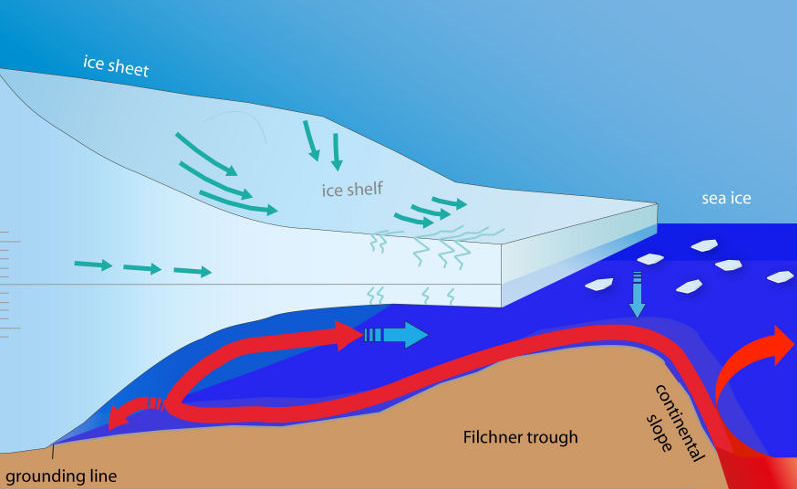
Two groups of scientists found in 2014 that West Antarctic glaciers had retreated far enough to set off an inherent instability in the ice sheet. A large section of the mighty West Antarctica ice sheet has begun falling apart and its continued melting appears to be unstoppable. This melting could destabilize neighboring parts of the ice sheet as well.
Dr. Rignot that led one of the research teams said in the NASA news conference regarding the new findings: "Today we present observational evidence that a large sector of the West Antarctic ice sheet has gone into irreversible retreat. It has passed the point of no return."
Dr. Alley, a climate scientist who studied the polar ice sheets for decades, threw a supposedly rhetorical and provocative question: "If we have indeed lit the fuse on West Antarctica, it’s very hard to imagine putting the fuse out. But there’s a bunch more fuses, and there’s a bunch more matches, and we have a decision now: Do we light those?"
As far as we’re concerned, it is a very serious question with a very serious and unequivocal answer, we’ve got to!
Seasonal snow covered land
Seasonal snow covered land exists mainly in the north hemisphere, in the arctic land areas and southwardly. Unlike sea ice and glaciers, most of the terrestrial snow cover is totally seasonal, meaning it completely melts and disappears each spring and summer. The timing of this melt has important implications on the albedo and therefore on the increase in the energy the earth absorbs.
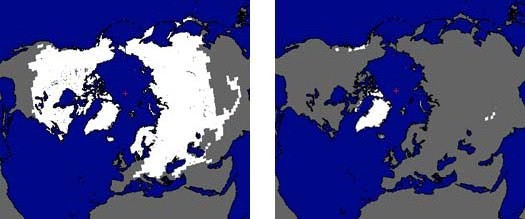
The rate of snow cover loss over the Northern Hemisphere land areas in June between 1979 and 2013 is -19.9% per decade. Due to the faster and earlier melting in the spring, there is much less snow covered area in the beginning of summer, meaning longer time of low albedo in the summer and an earlier full melting of the snow cover.
This issue is of such high importance and relevancy because as it gets hotter globally, the Arctic terrestrial snow cover melts earlier in the spring, consequently the albedo gets lower and all the sunlight is "free" to be absorbed by the land and significantly increase temperatures. The earlier the melt is, the longer time the radiation "has" to be absorbed during a low albedo period.
The Arctic terrestrial snow cover is an important contributor to the cooling effect of the cryosphere, which is the most important contributor to the cooling of the entire planet, so the recent reductions in Arctic spring snow cover have direct effects on the global climate system.
The Arctic Region
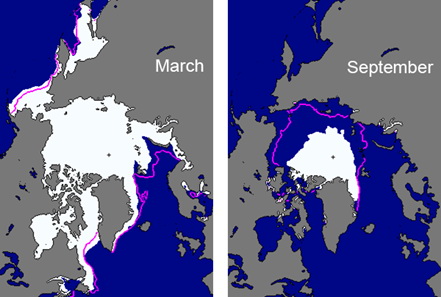
The arctic region is the area surrounding the North Pole, which by one of its definitions includes all the area north of latitude 66˚N meaning the Arctic Ocean and all the land that surround it – Greenland and parts of Canada, Alaska, Russia and north of Europe (Norway, Sweden, Finland and Iceland). In this region the sun does not set in the summer, and in the winter there is a complete darkness.
For several reasons the north and south polar regions do not react the same to global warming. One of these reasons as mentioned is that the arctic unlike the Antarctic, which is a continent covered with snow, is an ocean covered with sea ice (ice cover that floats on the water). Sea ice is much thinner (up to 5 meters high) than the ice sheets (ice covering land) in Antarctica (up to 4 kilometers high). So each summer some of the ice covering the Arctic Ocean melts uncovering the oceans water, therefore drastically changing the albedo of the area, as a very high albedo surface is exchanged for a very low albedo surface.
Typically, the Arctic sea ice reaches its maximum extent in March (end of winter) and its minimum extent in September (end of summer). Satellite records (from 1979 till present) show a decrease trend of 4% per decade for the winter ice extent (maximum) and 11.5% for the summer ice extent (minimum). September 2012 had the lowest sea ice extent observed since satellite record and was 49% below the 1979-2000 average minimum. In fact 2007-2013 have been the seven lowest years of minimum extents since satellite record. Overall, in 2012, 11.83 million km2 of ice were lost between the maximum and minimum extents, more than the area of the Unite States. This is the largest seasonal decline in records and 1 million km2 more than in any previous year ’s seasonal decline.
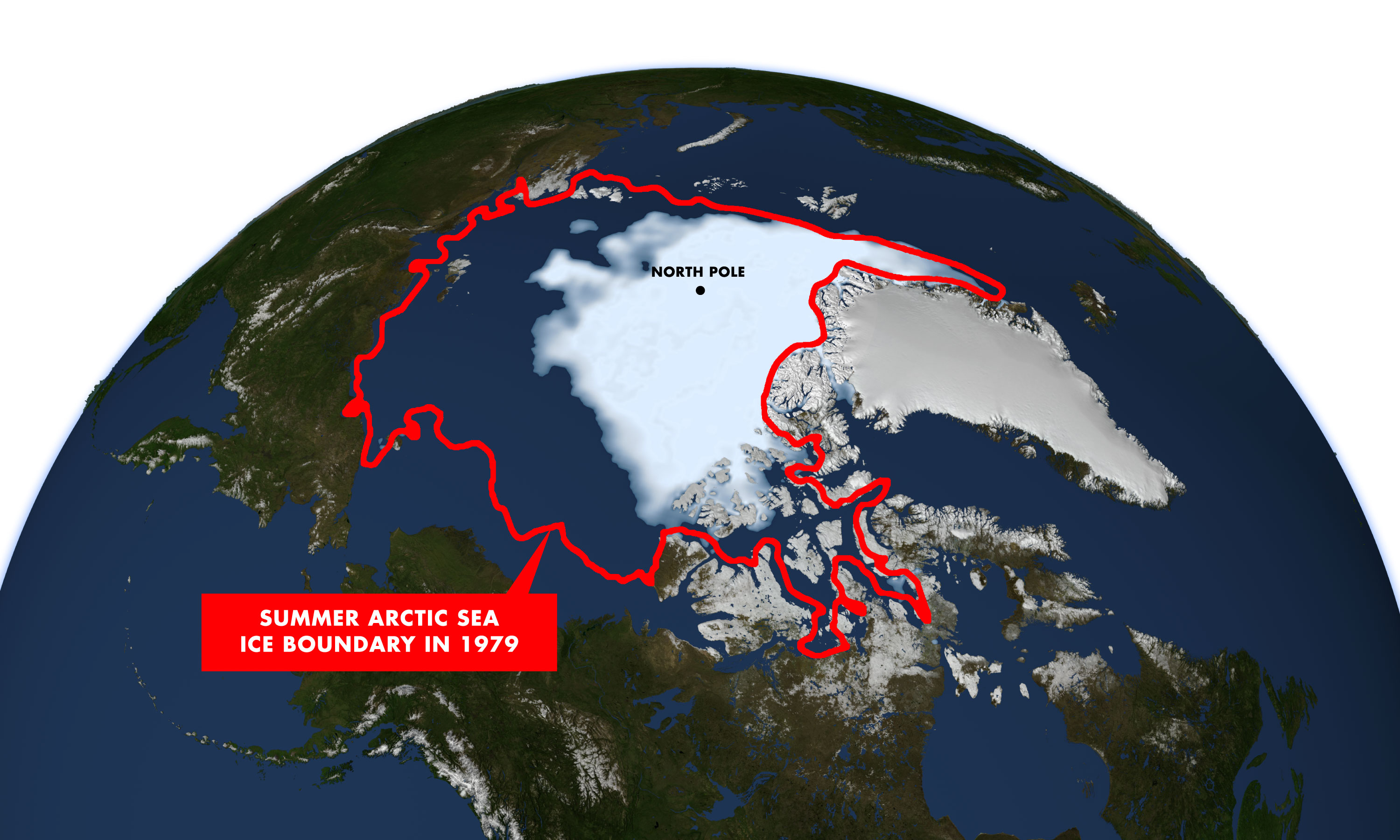
Not only is the extent of the arctic sea ice affected, but also the melting timing. The ice starts melting earlier in spring and starts to expand later in autumn, meaning longer time with water uncovered every year, thus longer time with lower albedo. Also the ice becomes “younger”. Multiyear ice (ice that didn’t thaw for two or more summers) is in decline, with a decrease of 13.5% per decade. It used to cover 60% of the Arctic Ocean area, however in March 2013 multiyear ice covered only 30%. It is highly significant since obviously first year ice is thinner than multiyear ice and obviously the less volume of ice that forms, the faster it melts, exposing a much darker surface that absorbs much more radiation. In addition, thinner ice can be broken more easily by storms, making it even more prone to melt.
Computer modeling that took into account the positive feedback effect of increasing area of open water in the North Pole each summer, concluded that the arctic may be almost free of all summer ice by as early as 2040. The scientists added that this feedback mechanism would fully kick in without the need of a dramatic event, but by one year slightly warmer than normal. Then, a very rapid retreat would follow.
A different attempt to predict a free of sea ice Arctic is by using a method called "trendsetters" based on observed trends, in this case of sea ice melting, taking into account the rapid sea ice decrease in the previous decade and especially the loss of multiyear sea ice. The estimations based on this method are of a free of sea ice Arctic by as soon as 2020 .
Greenland
Another part of the arctic region highly affected by global warming is Greenland’s ice-sheet. Greenland is a land almost completely covered with ice, from the accumulation of snow precipitation. This ice sheet is kilometers thick. In the last decades Greenland is also melting faster, meaning larger areas experience melting. In the summer of 2012, Greenland’s surface melting was intense. 97% of the surface experienced melting at some point in the season. This is nearly 4 times greater than the 25% average melt extent that occurred in 1981-2010, and it had the lowest surface albedo observed in 13 years of satellite observations (2000-2012). While 2012 was off the charts, intense melt years have been the rule since 2006, particularly in 2007 and 2010. And not only that the melting extent is increasing but it starts earlier in the spring and ends later in autumn. Between 1973 and 2010, there has been an additional 70 days to the melting period Beginning 40 days earlier in the spring and ending 30 days later in autumn .
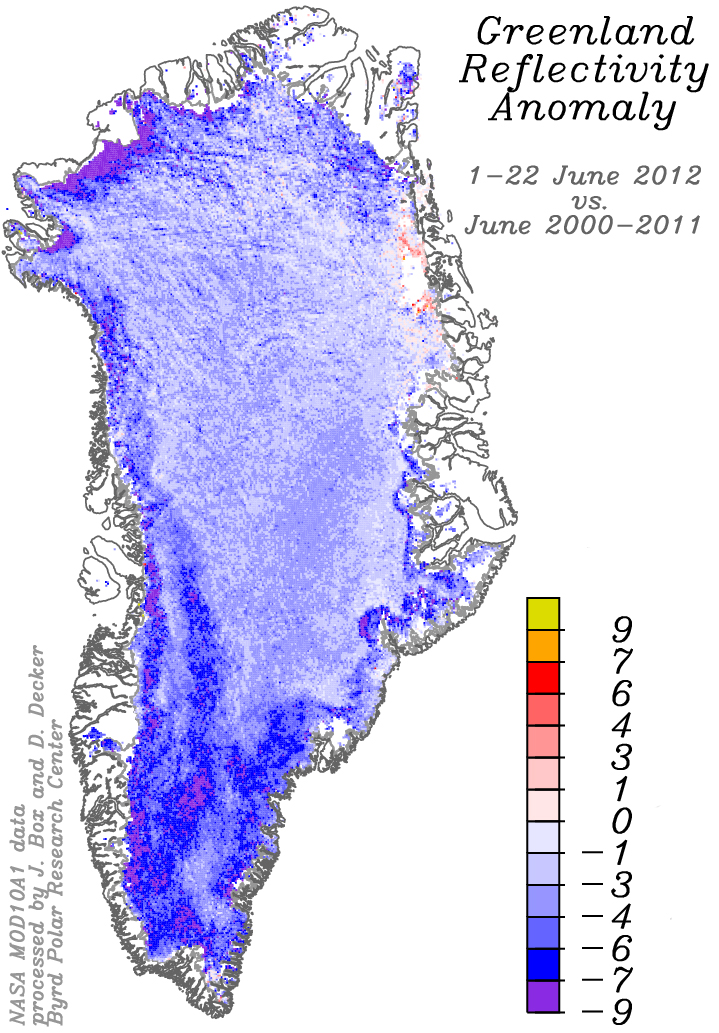
The map above shows the difference between the percent of sunlight Greenland reflected in the summer of 2012 and the average percent it reflected between 2000-2011. As you can see most of Greenland is in blue shades meaning less sunlight was reflected (more was absorbed) in 2012 compared with previous years.
In the past decade, satellite observations show a drop in Greenland’s reflectiveness. There are a number of reasons for this albedo decrease.
One is, as mentioned earlier, due to deposition of dark particles on the snow originating from wild fires, industrial emissions and so on.
Another is an increase in the melted water pools due to temperature rise that form dark areas on the surface of the ice.
And even in the colder more elevated areas where there is usually no melting, the snow itself is getting darker by changes in the shape and size of the ice crystals in the snowpack as its temperature rises. The snow grains clump together, and reflect less light than the many faceted, smaller crystals. Additional heat makes the sharp edges of these crystals rounder and round particles absorb more sunlight than jagged ones do.
So we can see a progressive positive feedback happening in Greenland in the past decade with many factors accelerating themselves and others.
While temperatures rise globally, the warming is not equally distributed. The arctic area (including Greenland) is experiencing a much faster warming than the rest of the north hemisphere, a phenomenon known as "Arctic Amplification". While global temperatures from 2000–2009 were on average about 0.6°C higher than they were from 1951–1980, the Arctic was about 2°C warmer. Albedo decrease due to increased melting has an important role in Arctic Amplification.
The map below shows global temperature anomalies for the average temperature of 2000 to 2009. It does not depict absolute temperature, but rather how much warmer or colder a region is compared to the average temperature of 1951 to 1980 for that region. It demonstrates the mentioned Arctic Amplification very well, as you can easily observe, the arctic is experiencing a much faster warming than the rest of the world.
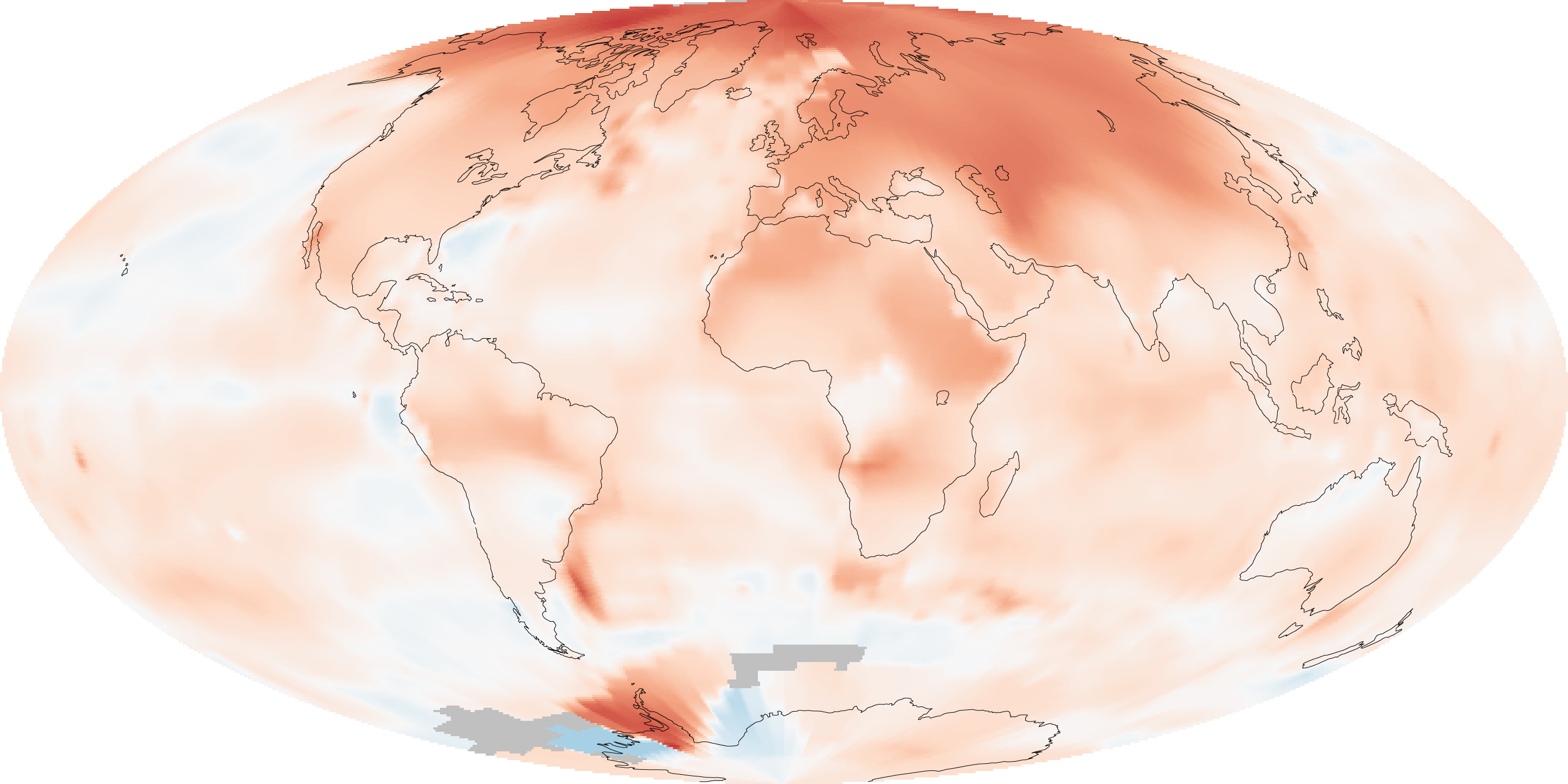
In order to demonstrate the climatic importance of the arctic region, climatologists like to refer to it as the planet’s air conditioner. So if to follow this analogy, and while considering the earlier mentioned positive feedback mechanism (the hotter it gets, the hotter it gets), we need to look for the crucial part of the air- conditioner and destroy it, and then it will continue destroying itself.
Though already occurring in rapid speed as it is, there are ways to target these frozen regions and others, turning them from highly reflective to highly absorptive zones.
The study of initiatives to manipulate the Albedo of the Arctic goes back to the 50’s by both the US and the Soviet military.
During the early 60's Mikhail Budyko, the most prominent Russian climate expert along with other scientists speculated about how to alter the global climate by strewing dark dust or soot across the Arctic snow and ice. Spreading absorbent particles in the atmosphere above was also considered. Both the Soviets and the American experts agreed the Arctic ice might not re-form after it melted.
This idea and others about modifying local climate were eventually turned down largely out of fear for their long-termed global effects. Their fear is our greatest hope.